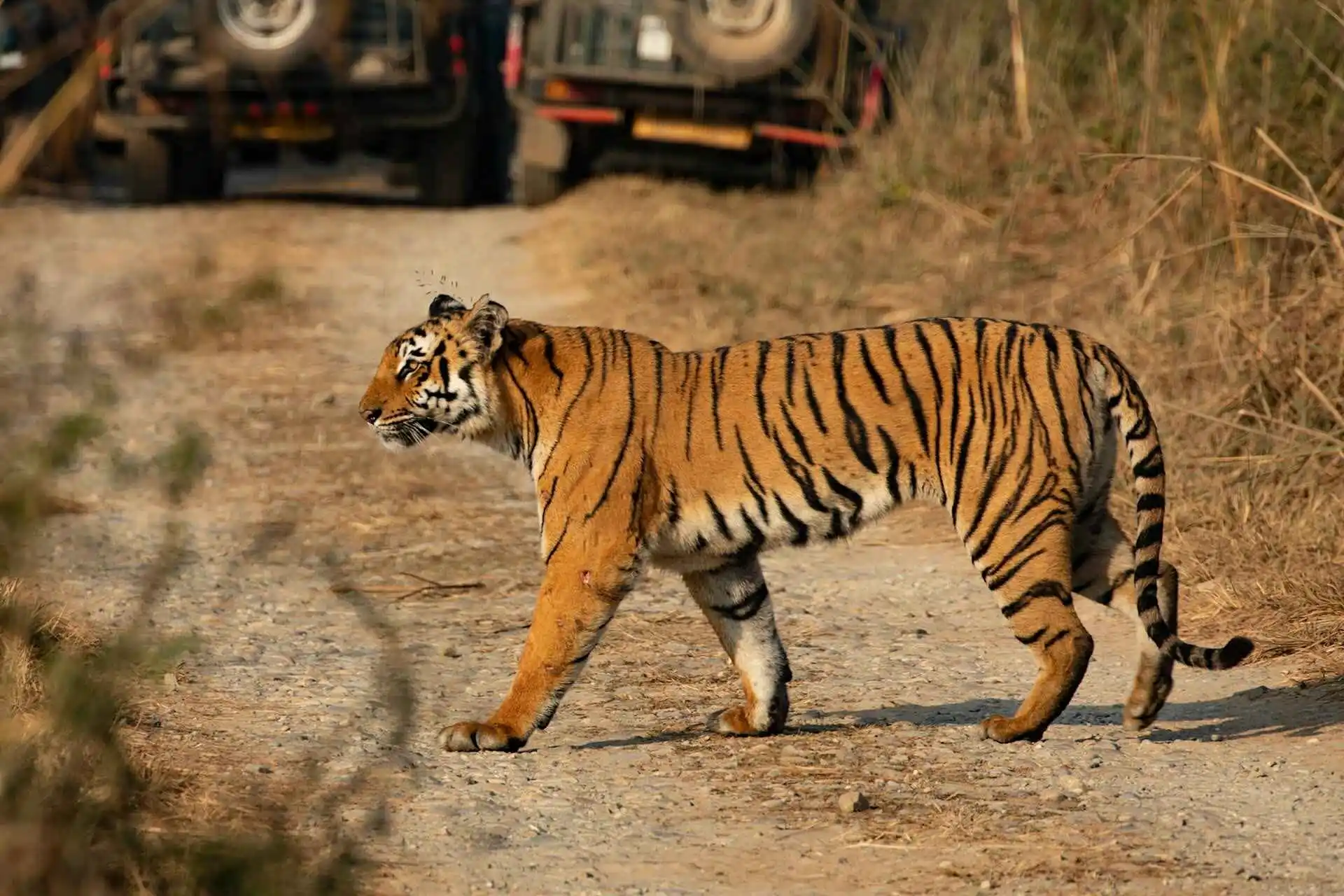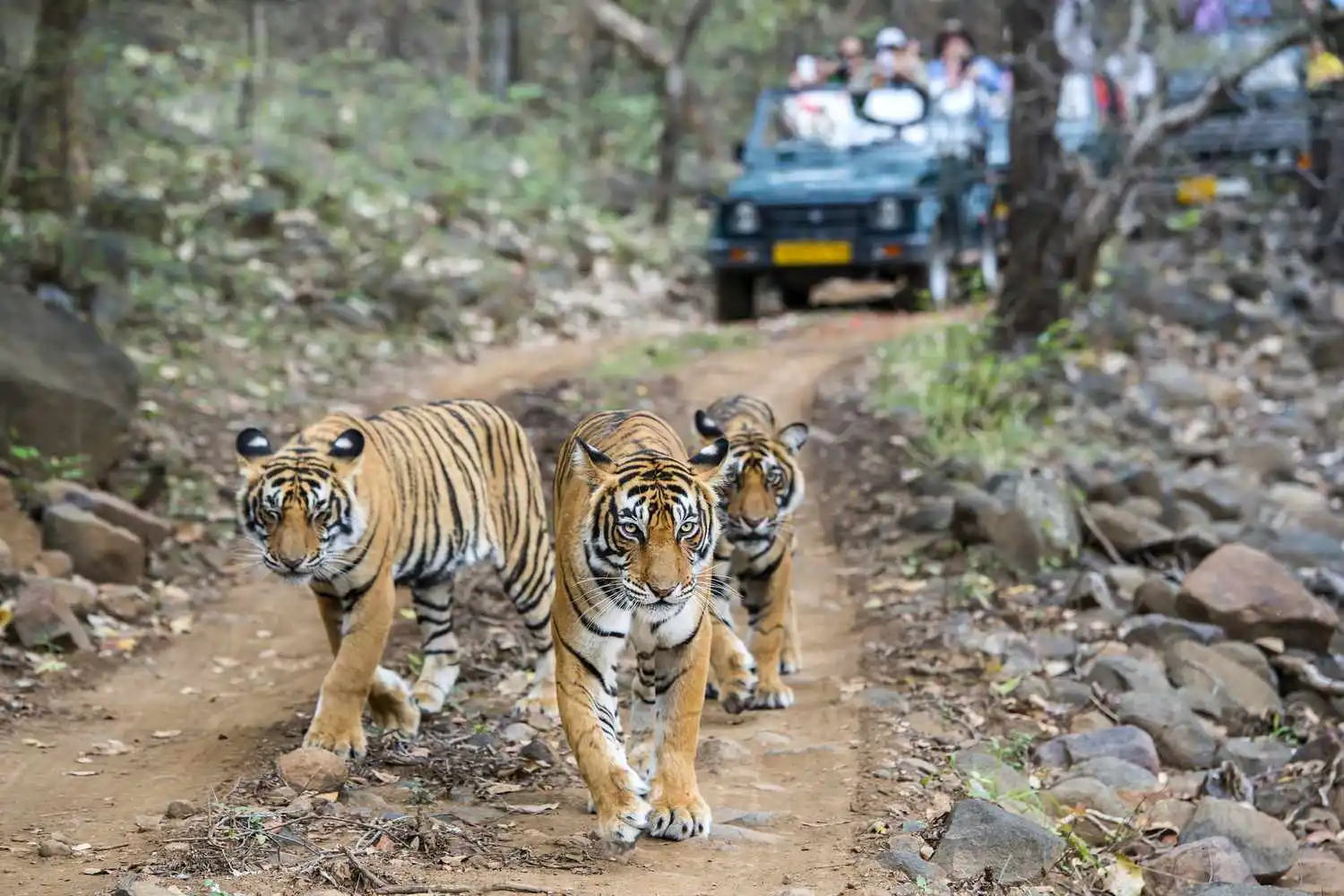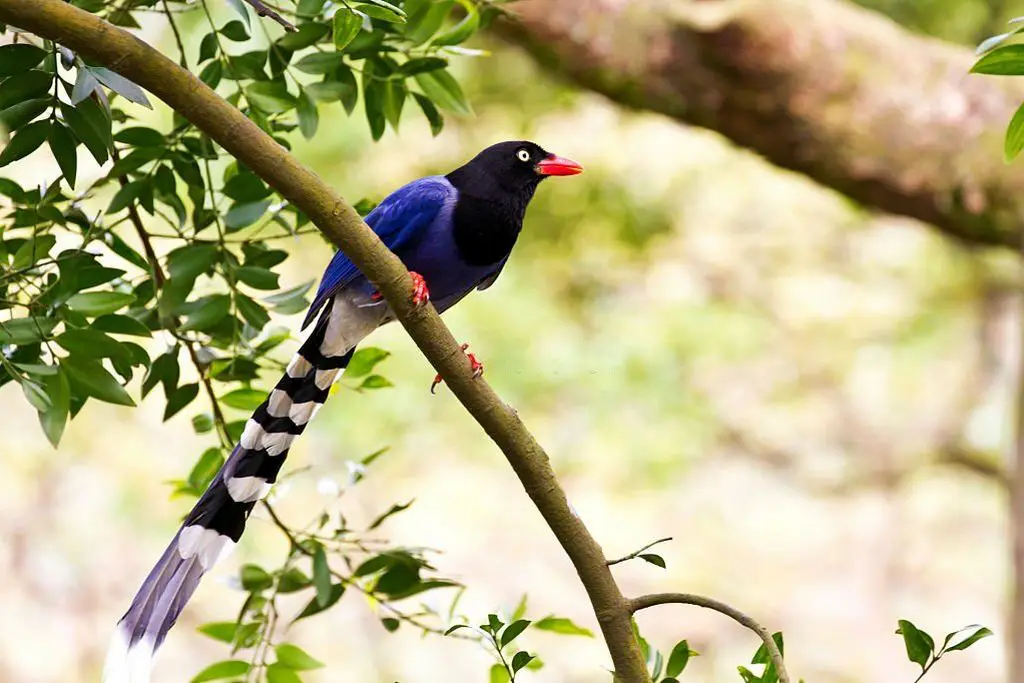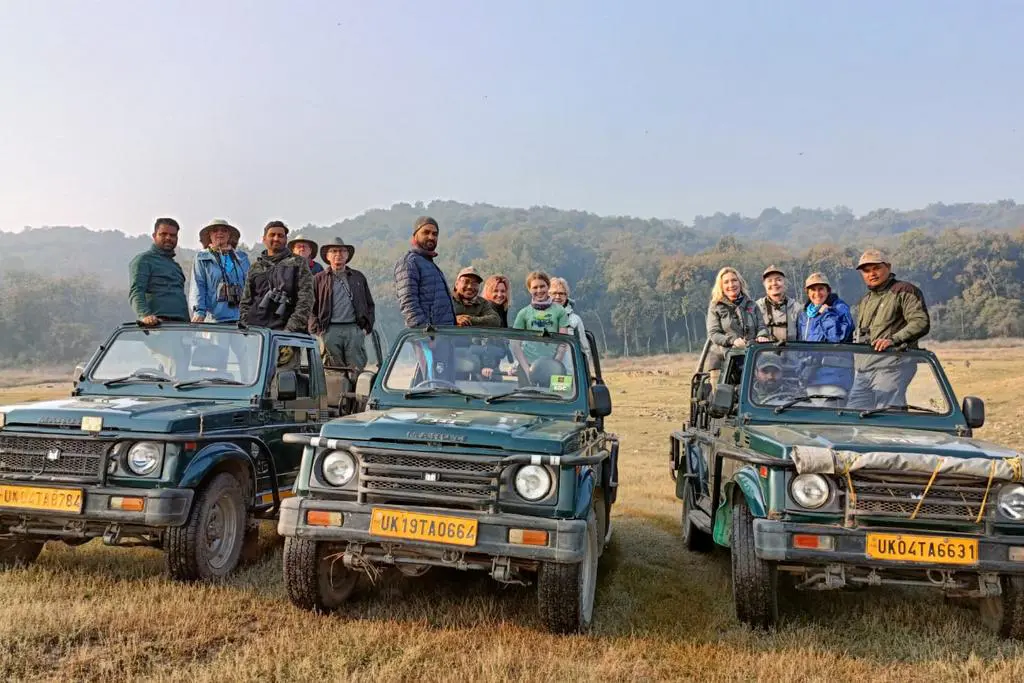Published by Oyepedia Travel LLP
Sariska and Ranthambore National Parks, both located in the western state of Rajasthan, are among India’s premier wildlife destinations. While Sariska is experiencing a resurgence in its tiger population following some difficult years, Ranthambore continues to be one of the most famous spots for tiger sightings in India. A comparison of these two parks, while potentially subjective, is often drawn by tourists due to the increasing popularity of Sariska and the longstanding reputation of Ranthambore among wildlife enthusiasts. Below, we present a detailed comparison of the two parks based on several key factors:

Area
Sariska Tiger Reserve, located in the Aravali Hills, covers an area of approximately 800 square kilometers. Its landscape is a mix of grasslands, dry deciduous forests, cliffs, and rocky terrain. In contrast, Ranthambore National Park spans around 400 square kilometers, but when combined with the Sawai Man Singh Sanctuary, it extends to nearly 500 square kilometers. Both parks are rich in biodiversity and offer varied terrain that enhances the wildlife experience.
Tiger Population

Sariska has seen a remarkable recovery in its tiger numbers after several setbacks, including the extinction of tigers in the park in the early 2000s. The park has become the first in India to successfully relocate tigers from Ranthambore as part of conservation efforts under Project Tiger. Ranthambore, however, remains a flagship tiger destination, with a high tiger density and frequent tiger sightings, making it one of the best places to spot tigers in their natural habitat.
Forest Type
The forests in Sariska belong to the Aravalli Range and are characterized by dry deciduous vegetation, offering a unique landscape compared to other national parks in India. On the other hand, Ranthambore lies at the confluence of the Aravalli and Vindhya ranges, with a landscape that includes dry deciduous forests, seasonal lakes, and open grasslands, which are ideal for observing wildlife, especially in the drier months.
Accessibility
Both parks are easily accessible, but Ranthambore is better connected, located just 13.5 kilometers from Sawai Madhopur town in Rajasthan, which is well-connected by road and rail to major cities like Jaipur and Delhi. Sariska is also well connected, especially via Alwar, but its remoteness makes it less accessible than Ranthambore.
Highlight Fauna
While both parks are renowned for their tiger population, they are home to diverse wildlife species. Sariska boasts a variety of animals such as leopards, spotted deer, sambar, and langurs, alongside a thriving population of tigers. Ranthambore, apart from tigers, is known for its large population of Indian crocodiles, leopards, and various species of deer, making it a prime location for wildlife photography and safari enthusiasts.
Bird Species

Sariska is home to over 200 species of birds, including the rare Indian Vulture and the Great Indian Bustard. This makes it a popular destination for birdwatching. Ranthambore, with its diverse ecosystem, is home to over 270 species of birds, including migratory species like the Siberian Crane and the Painted Stork, making it an exceptional location for birding enthusiasts.
Operating Months
Sariska and Ranthambore operate during the same safari season, from October to June, with both parks closing for the monsoon season between July and September to allow wildlife to breed and the forest to rejuvenate.
Best Time to Visit
The best time to visit both parks is between November and April, as the cooler weather and dry conditions make it easier to spot wildlife. However, Ranthambore generally offers more consistent tiger sightings due to its open terrain and established tiger populations.
Safari Types

Both Sariska and Ranthambore offer jeep safaris, which are the most popular mode of exploring the parks. Sariska also provides the option of canter safaris for larger groups. Ranthambore is known for its thrilling open jeep safaris that take you deeper into the park, providing ample opportunities for wildlife sightings.
Permit Booking
In terms of permit booking, Ranthambore has a well-established online booking system that allows tourists to pre-book safaris and permits in advance. Sariska also follows a similar system, but booking permits can sometimes be a bit more challenging due to the park’s limited number of safari vehicles. It’s recommended to book permits well in advance for both parks, especially during the peak tourist season.
Conclusion
Both Sariska and Ranthambore are invaluable gems in India’s wildlife tourism sector. While one may be better suited for those looking for a quieter, off-the-beaten-path experience, the other offers more consistent sightings of the majestic tiger. Each park has its own unique charm, and for wildlife enthusiasts, visiting both can be a rewarding experience that showcases the diversity and beauty of India’s rich biodiversity. For more information about safari tours and customized packages to Sariska and Ranthambore, feel free to reach out to us at [email protected].

